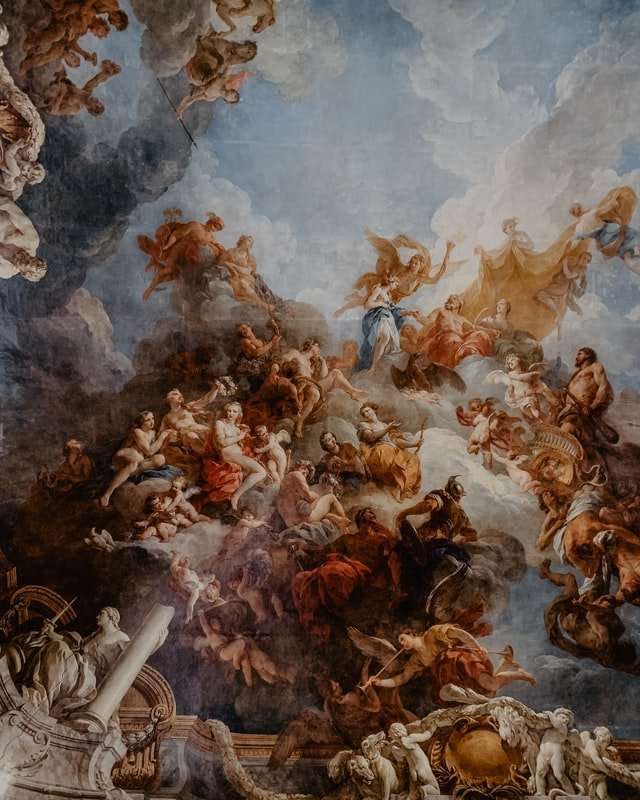What is Mandala Art? The word “mandala” comes from Sanskrit and means “circle.” A mandala might be a two-dimensional drawing, a sculpture, or even a three-dimensional object. It can be as simple as a sand painting (like the Native American version) or as complicated as a large metal sculpture. In essence, what all mandalas have in common is that they are an aid to meditation.
Tibetan Buddhism is the most popular origin of mandalas, but there are many examples throughout history of similar circular symbols used for religious or meditative purposes. In 1510, Heinrich Cornelius Agrippa published Three Books of Occult Philosophy and included a diagram of concentric circles with text in each circle meant to represent spiritual development.
Another example is the Ouroboros, which was a symbol used by alchemists to represent the cyclical nature of life and death. It was also used by Gnostics and early Christians to represent Christ’s resurrection and rebirth or reincarnation.
The use of mandalas in Tibetan Buddhism can be traced back to at least the 11th century CE where they were used by Buddhist monks during meditation practice. The most famous Tibetan mandala is probably the Kalachakra mand
Mandala art is a particular style of drawing that originated in Tibet and was used as a form of meditation. In Tibetan, the word mandala means “center” or “sphere.” A mandala is usually a circle that divides up the space inside it into four quadrants, each with its own color scheme. The four quadrants represent different elements such as fire, earth, water and air.
Tibetan Buddhists believe that by contemplating mandalas, one can understand the true nature of things and come to realize the oneness of all phenomena. By meditating on a mandala, one comes to see each individual part as being connected to the whole and then grasps the unity of things in one’s life.
Mandalas are usually made up of symbols representing certain qualities. The symbols include geometric shapes, animals and objects as well as deities. Mandalas are also often painted or drawn with sand because they are meant to be performed while seated on the ground.
The idea behind mandalas is an ancient one. It is found in many forms of Indian art and religion including Hinduism, Jainism and Buddhism. It has become popular in the West in recent years due to its use in meditation practices but it can be seen
A mandala is a spiritual and ritual symbol in Hinduism and Buddhism, representing the universe. The basic form of most mandalas is a square with four gates containing a circle with a center point. Mandalas often have radial balance, radiating lines, or repeating geometric shapes.The word ‘mandala’ comes from the Sanskrit language and means “circle.” Mandalas are found in all major religions of the world, like Christianity (the Celtic Cross), Islam (the star and crescent), Sikhism (the Sri Yantra) and others.
In fact, the word “mandala” has become so popular that it is now used to describe any diagram, chart or geometric pattern that represents the cosmos metaphysically or symbolically. The most common use today is in connection with New Age practices.’
Mandala art originated many centuries ago as a way for Buddhists to focus their meditation practices. Buddhists believe that when one concentrates on a mandala image for a long time, it brings about an altered state of consciousness. This was done as part of their spiritual discipline. But it wasn’t until the twentieth century that this type of art became popular outside of Asia.
In Tibetan Buddhism, mandalas were originally used as tools for contemplation,
Mandala is a Sanskrit word that means “circle.” The mandala is a symbol of the universe in Hinduism and Buddhism. It represents the universe, or the nature of being. It is created by drawing a circle and adding radial lines to it, with symbols placed at each junction point.
Tibetan spiritual art is based on ancient Indian and Tibetan religious beliefs, which were formed over 2000 years ago. The mandala symbolizes the world as seen by Buddhists, and its center represents the enlightened state of mind that comes from enlightenment.
Tibetan art has strong connections with Hinduism and Buddhism. The Dalai Lama is considered to be a “Custodian of Buddhist Faith” in Tibet, and his likeness appears in many Tibetan Buddhist works of art.
The structure of Tibetan art evolved over centuries into its present form. The drawings are done in colored sand or colored chalk on a wooden board; or they are painted or drawn on canvas or paper with ink or colored pencils.>>>
A mandala is a spiritual and ritual symbol in Indian religions. In common use, “mandala” has become a generic term for any diagram, chart or geometric pattern that represents the cosmos metaphysically or symbolically; a microcosm of the universe. The basic form of most mandalas is a square with four gates containing a circle with a center point. Each gate is in the general shape of a T. Mandalas often exhibit radial balance.
Tibetan Buddhists employ mandalas in their rituals. They believe that creating and focusing on an image of an enlightened being will help lead to enlightenment – which is the reason why you’ll see so many photos of Buddhas online for download as wallpapers for desktop computers and mobile phones.
The Tibetan word for mandala translates as “magic circle”; it is related to the Sanskrit word “yantra”, meaning “instrument of potentiality”. Other names include “spiritual diagram” and “sacred geometry”. The overall shape is usually symmetrical but there are always variations within each mandala to give emphasis to different elements.
In Hinduism, the mandala is not just a geometrical figure but also has religious connotations. It’s considered spiritual because it’s believed to
A mandala is a circle that represents wholeness or completeness. Mandalas are commonly found in the art and literature of both Eastern and Western cultures. In Hinduism, Buddhism and Jainism, mandalas have been practiced for more than two thousand years. Mandalas are used for meditation, ritual, and spiritual journeys.
Tibetan Buddhists believe that mandalas protect from demons. The word mandala comes from the Sanskrit language and means “circle.” In Tibetan Buddhism, mandalas are also referred to as yantras.
A mandala is an intricate design that can look like a drawing or painting. It is usually circular but can also be rectangular or square in shape. The purpose of the mandala is to help the viewer focus on one thing, such as God or a higher state of consciousness. It can also represent a map of the universe or the mind of God; it can represent anything that has unity, completeness, and balance. A mandala is not just an object but also a process.*
* A mandala is a spiritual and ritual symbol in Hinduism and Buddhism, representing the universe. In common use, “mandala” has become a generic term for any diagram, chart or geometric pattern that represents the cosmos metaphysically or symbolically; a microcosm of the universe.
Hindu texts on architecture describe elaborate rules for Hindu temple layout based on cardinal direction and orientation towards the sunrise. Mandalas are also commonly used in Tibetan Buddhism, and their use by other sects is evident as well. The practice of creating mandalas is common to Hinduism, Vajrayana Buddhism and Jainism.
Tibetan mandalas are traditionally painted or drawn on paper, then later ritually destroyed. Their purpose is to assist in meditation. They are also created as an offering to deities for protection or for other wishes to come true. Chakrasamvara is one example of a deity who is worshipped with the creation of a mandala.
Translation: Mandala is Sanskrit word which means circle . A Mandala is like diagram or map which represents the universe ,all the planets and stars in it according to our traditional theories of astronomy .
The word Mandala means circle in Sanskrit language and can be seen as a pattern which


